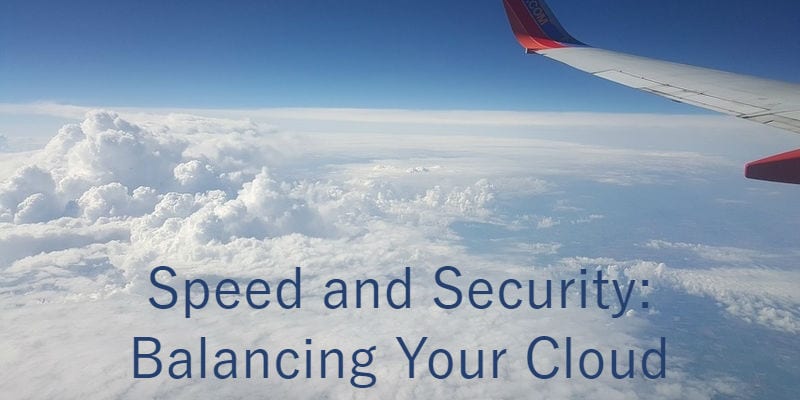How to Balance Security and Speed in Cloud Computing


Many enterprise technology teams discuss the benefits of DevOps. Developers and other IT professionals want to know how they can work faster. Unfortunately, this has been taken to extremes for a lot of DevOps teams. Sometimes, security doesn’t come in until the very end of the development pipeline or even after the code is live. What a team prioritizes is up to them, but security shouldn’t be an afterthought for anyone.
Priorities
Many enterprise technology teams have adopted DevOps. Despite the benefits, DevOps lacks emphasis on security best practices. DevOps is about building better software by improving and speeding up the development process. How can software be better without proper security though?
Despite the importance of security, it’s something DevOps teams might not be thinking about as much as they should be. Speed should not be a substituted for security. The best way to overcome this problem is by securing the entire pipeline.
Distributed expectation
DevOps is a cultural change first and foremost. With that comes different expectations for your teams. Development and operations teams were the initial push, but security teams need to come in. Developers should have more understanding of security. Moving security left on the development pipeline is the first step.
Understanding the specifics of what your colleagues are looking for makes the entire software release process easier. DevOps is about trust and cooperation, training can further bring teams together. Bolting security on a product after a release leads to a disturbing lack of reliability. Having knowledge about what security teams will be looking for makes the entire process easier for everyone. Developers will recognize flaws as they’re working, thus creating better code.
Automating security
Many DevOps teams see containers as a necessary tool to optimize workloads. Containers make the development pipeline much simpler. It also allows developers to have an extensive community to work with, as Kubernetes is open source and there are components throughout GitHub and other development libraries.
As helpful as containers can be, they can also be a security risk with improper practices. It isn’t realistic to manually monitoring every change in code, every feature update, every environment, and every networking request. Automating this process is critical. There are container security solutions providers, like Twistlock, that make container security easier. They cover the deployment and development lifecycle.
The entire cycle needs to be protected, as any vulnerability can lead to problems. This is also relevant regarding what containers do best, scale. Security providers need to scale as you do. Containers workloads can grow and change, your security provider needs to do this as well.
Automating security provides peace of mind, but it shouldn’t be the only focus on container security. The entire development and deployment lifecycle may be safer, but your entire IT team needs to be aware of best security practices. Containers will drive innovation in your company if you’re able to use them properly, and there’s no excuse not to.
Widget not in any sidebars





















